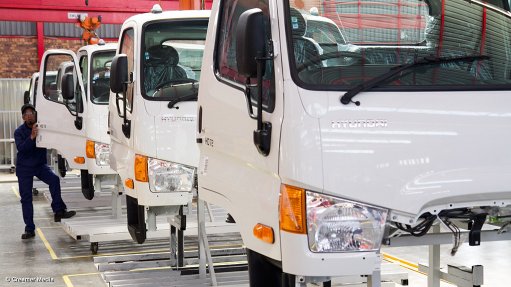
As from April 2017, the Department of Trade and Industry (DTI) aims to support only completely knockdown (CKD) truck production in South Africa, and no longer semi-knockdown (SKD) assembly, says DTI automotive chief director Mkhululi Mlota.
“It is not yet legislated, but it should be the case in the next 12 months. Yes, we want to phase out the current support for SKD assembly,” he confirms.
The truck assembly industry in South Africa works largely on the basis of SKD assembly, with the already assembled, imported cab ‘married’ to the chassis, with limited local content on the vehicles.
Truck assemblers currently pay no import duties if SKD assembly of their vehicles takes place locally.
Government’s proposed Medium and Heavy Commercial Vehicle Automotive Investment Scheme (MHCV-AIS) will, however, recommend a new support regime.
The MHCV-AIS was released for comment in July. Government’s current Automotive Production and Development Programme (APDP) has no truck and bus support programme, with these industries still operating largely under the programme preceding the APDP, the Motor Industry Development Programme, which expired in 2012.
National Association of Automobile Manufacturers of South Africa director Nico Vermeulen said in August that the proposed MHCV-AIS “clearly has two goals”.
The first is to encourage already established truck and bus assemblers to add value to their products, increase localisation and, through this practice, increase their labour contingent.
For truck and bus brands currently importing their products, the goal is to use incentives to move them to SKD assembly, said Vermeulen.
While APDP incentives for car and car components manufacturers are, among other factors, driven by volume production, it appeared that truck and bus assembly would be investment-incentive-driven, because of low-volume commercial vehicle production in South Africa.
It is currently proposed, under the published guidelines, that the MHCV-AIS will return 20% of the total value of their investments to relevant vehicle manufacturers and 25% to components and tooling companies.
Mlota confirms that the aim of the new programme, among others, is to increase the local content on truck cabs.
“If we do the cab trimming there, we can increase employment in the sector.”
He says he expects a certain degree of resistance from established assemblers to move to CKD assembly.
Mlota “hopes” to have the final MHCV-AIS document ready in October.
Truck brands such as Mercedes-Benz, MAN, Tata, Isuzu, Hino, Volvo and UD Trucks assemble vehicles in South Africa, with Hyundai and FAW added to the fold this year.
The domestic truck market totals around 30 000 units a year, compared with around 620 000 cars and bakkies sold locally last year.